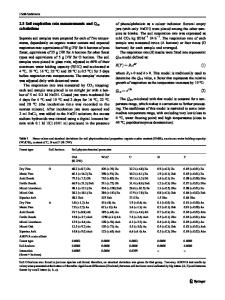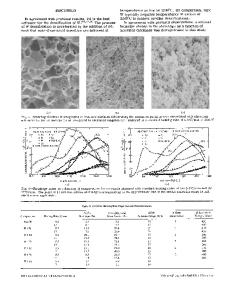spn-A/rad51 mutant exhibits enhanced genomic damage, cell death and low temperature sensitivity in somatic tissues
- PDF / 11,148,970 Bytes
- 12 Pages / 595.276 x 790.866 pts Page_size
- 80 Downloads / 959 Views
ORIGINAL ARTICLE
spn-A/rad51 mutant exhibits enhanced genomic damage, cell death and low temperature sensitivity in somatic tissues Chaitali Khan 1,2
&
Sonia Muliyil 1,3 & Champakali Ayyub 1 & B. J. Rao 1,4
Received: 15 January 2020 / Revised: 9 November 2020 / Accepted: 12 November 2020 # This is a U.S. government work and not under copyright protection in the U.S.; foreign copyright protection may apply 2020
Abstract Homologous recombination (HR) is one of the key pathways to repair double-strand breaks (DSBs). Rad51 serves an important function of catalysing strand exchange between two homologous sequences in the HR pathway. In higher organisms, rad51 function is indispensable with its absence leading to early embryonic lethality, thus precluding any mechanistic probing of the system. In contrast, the absence of Drosophila rad51 (spn-A/rad51) has been associated with defects in the germline, without any reported detrimental consequences to Drosophila somatic tissues. In this study, we have performed a systematic analysis of developmental defects in somatic tissues of spn-A mutant flies by using genetic complementation between multiple spn-A alleles. Our current study, for the first time, uncovers a requirement for spn-A in somatic tissue maintenance during both larval and pupal stages. Also, we show that spn-A mutant exhibits patterning defects in abdominal cuticle in the stripes and bristles, while there appear to be only subtle defects in the adult wing and eye. Interestingly, spn-A mutant shows a discernible phenotype of low temperature sensitivity, suggesting a role of spn-A in temperature sensitive cellular processes. In summary, our study describes the important role played by spn-A/rad51 in Drosophila somatic tissues. Keywords Drosophila . DNA repair . Homologous recombination . rad51/spn-A
Introduction Our genome is subjected to constitutive assaults as a result of exposure to exogenous genotoxic agents, and endogenous factors such as errors in DNA replication, oxidative damage due to free radicals produced during cellular metabolism (Helleday et al. 2014). Of all kinds of DNA damage, double-strand breaks (DSBs) are one of the most deleterious * Chaitali Khan [email protected] * B. J. Rao [email protected] 1
Present address: Department of Biological Sciences, Tata Institute of Fundamental Research, Colaba, Mumbai 400005, India
2
Present address: Department of Genetics, Albert Einstein College of Medicine, 1300 Morris Park Avenue, Bronx, NY 10461, USA
3
Present address: Sir William Dunn School of Pathology, University of Oxford, South Parks Road, Oxford OX1 3RE, UK
4
Present address: Indian Institute of Science Education and Research (IISER) Tirupati, Transit Campus, Sree Rama Engineering College, Tirupati, India
DNA lesions, with the potential to cause chromosomal translocations and segmental deletions (Vilenchik and Knudson 2003; Cannan and Pederson 2016). Physiologically, programmed DSBs are created during the process of meiosis and V(D)J recombination in immune cells;
Data Loading...











